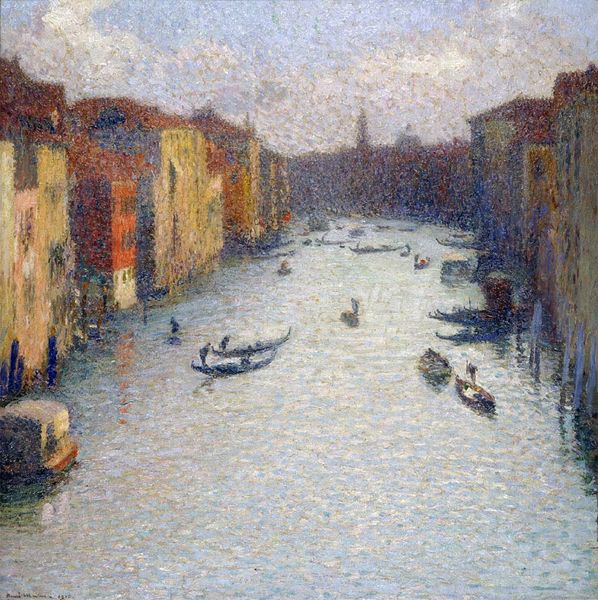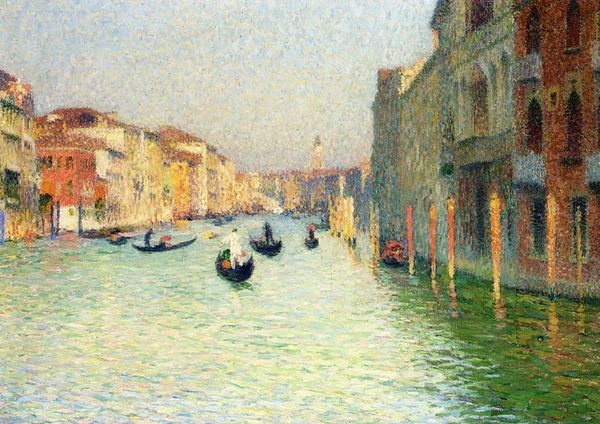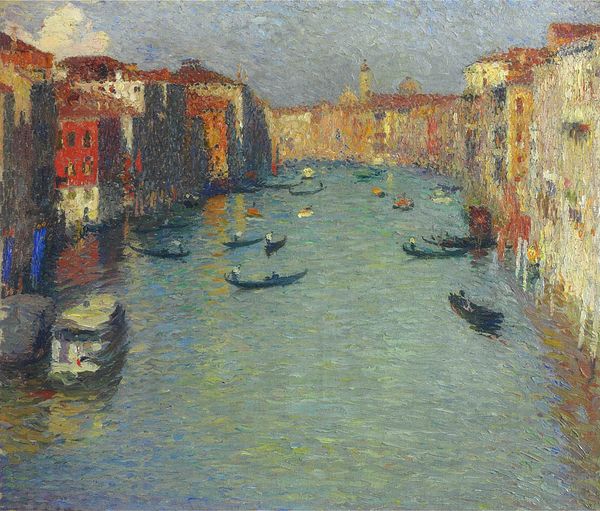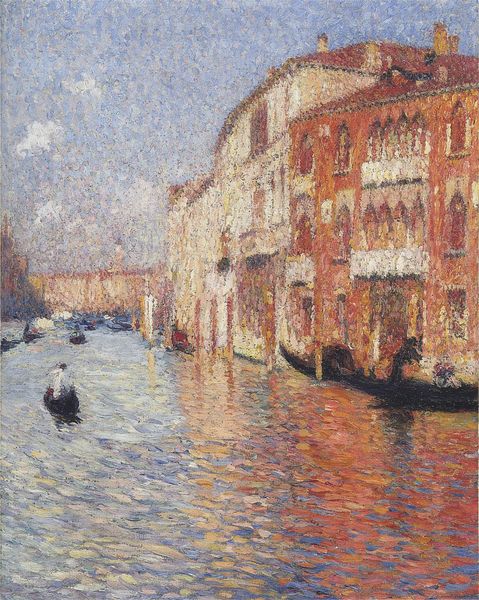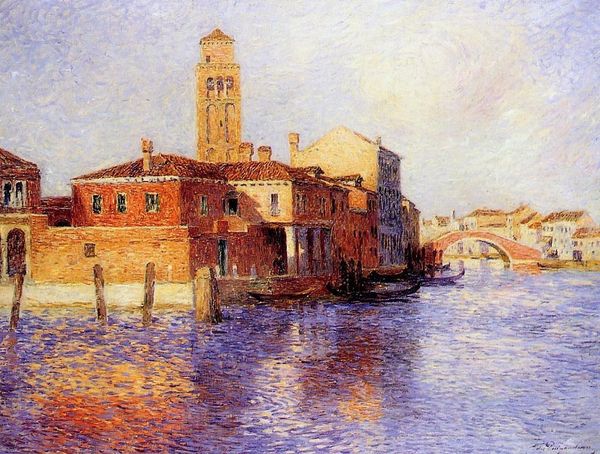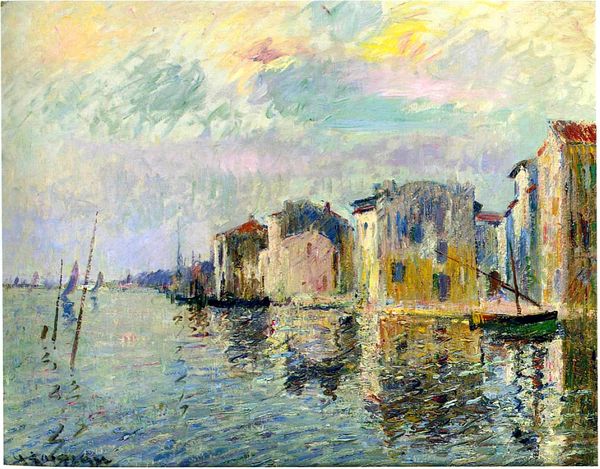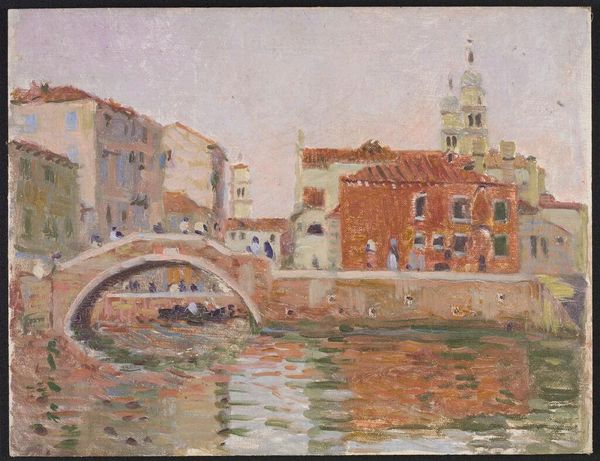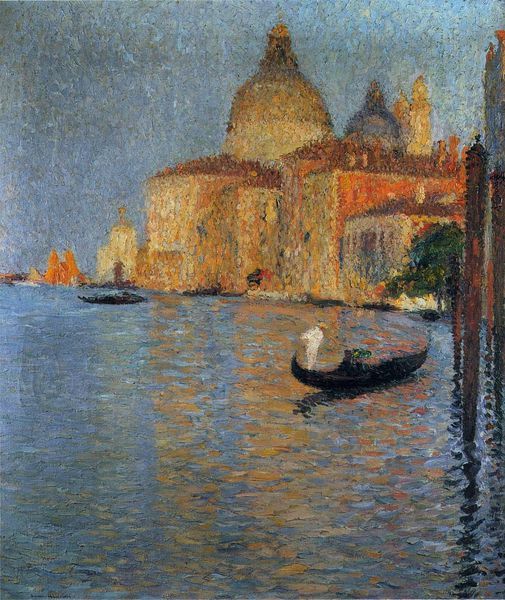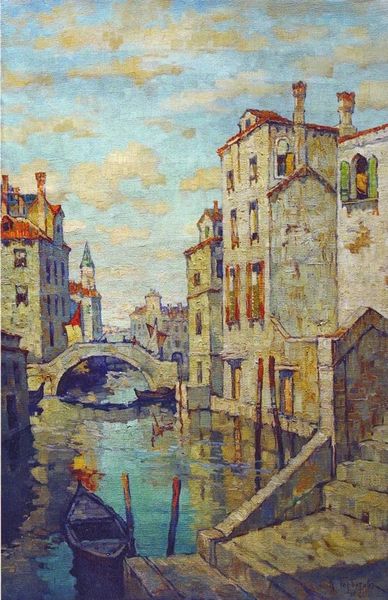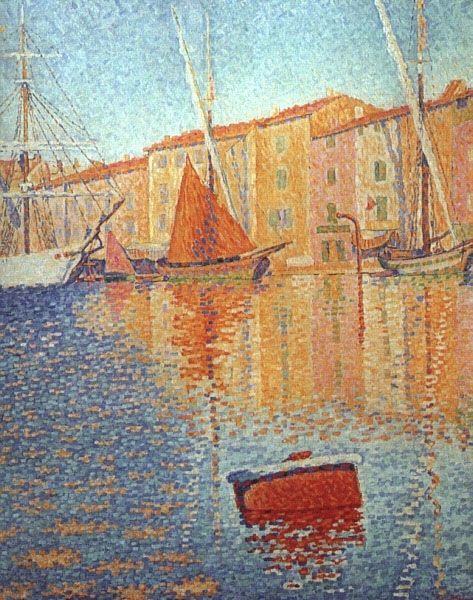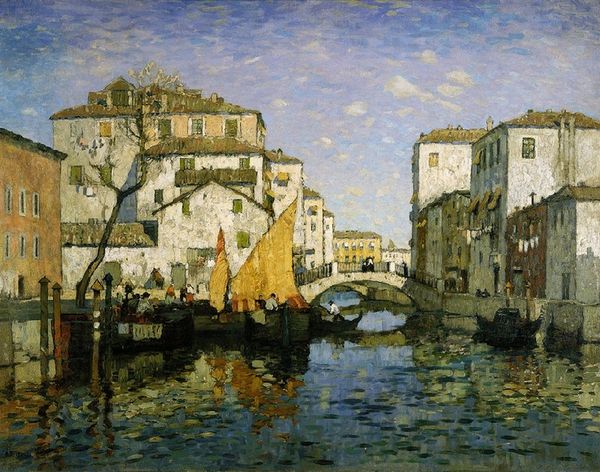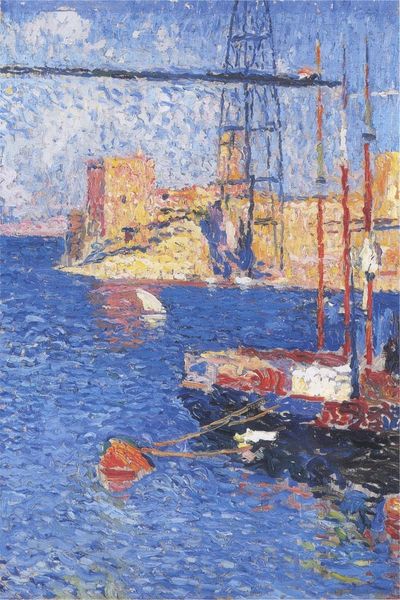
Copyright: Public domain
Curator: Here we have Umberto Boccioni's "The Grand Canal in Venice," created in 1907. It offers a striking impressionistic view of the famous Venetian waterway. Editor: My first impression is a quiet stillness, despite being a cityscape. There's a muted palette, a hazy light, and a sense of deep reflection in that water. Curator: Absolutely. Boccioni, though later known for his Futurist dynamism, captures Venice with a softened gaze, influenced by the Venetian painting tradition but rendered with a more modern eye, fitting into that pre-war sensibility before the Futurist manifestos really took hold. Think of the role Venice plays – it’s the city of water, constantly mirrored in its own image, fostering themes of introspection and mortality, often contrasting it with the emerging industrial progress occurring elsewhere. Editor: That melancholic atmosphere really seeps into the buildings themselves, doesn't it? The brushwork feels almost pointillist, breaking down the light, turning those structures into transient apparitions, particularly those receding into the distance. Do you see those boats that barely leave ripples upon the waters; there's this deep sense of contemplation, doesn't there, or is that just me? Curator: Not at all. It's evocative of the period. Venice was becoming a popular tourist destination but also struggling with that very fact, with over-tourism. The city has been, from its very conception, bound up with global trade and so is constantly mediating between inside and outside influences. Boccioni, here, is mediating Venice, filtered through his own modern sensibility. Editor: What’s interesting is how, although the boats and buildings represent transit and exchange, it feels quite internal. Is there an invitation to travel, or more a quiet study about permanence, temporality? I note that from our vantage point behind what is presumably a private terrace, it feels less like an advertisement of "come to Venice" than it does this personal experience – more intimate. Curator: That’s a very acute point. Perhaps he's inviting us to witness the evolving Venice, or offering a glimpse into the historical position that Venice represents, as one on the precipice of modernisation that threatened its identity. What would you say, thinking about the painting overall? Editor: To me, this scene acts as a memento mori. Despite its surface beauty, the city’s reflection and subtle brushstrokes hints at transience and reminds us that things are, and can change over time, in a beautiful, meditative moment. Curator: I'd say it is Boccioni's attempt to grapple with the Venice that was transforming around him and Venice that had been present centuries prior.
Comments
No comments
Be the first to comment and join the conversation on the ultimate creative platform.
